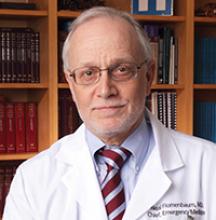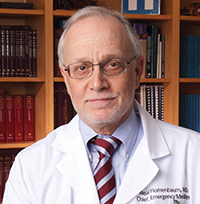User login
[Updating an editorial that first appeared in the August 2012 issue.]
Until recently, shortages of critically needed medications in this country were rare and unthinkable. But now, the unthinkable has become commonplace. In August 2012, I wrote about the seemingly endless supply problems and proposed some possible remedies, but in the 3 years since, not much has changed.
Cold War era images of empty Soviet Russia supermarket shelves still remain vivid reminders of a failed system of government. So, who would have predicted that in the 21st century, the United States of America, winner of the Cold War, would have hospital pharmacy shelves bereft of essential medications, including many of the sterile, injectable, crashcart meds we rely on during resuscitations? According to a November 2011 U.S. Government Accountability Office report (GAO-12-116), there were 1,190 drug shortages between 2001-2011 with the number increasing annually since 2006. Drug shortages have not escaped physician or public attention, and a lot of finger pointing among government agencies, manufacturers, and distributors, have made most of us feel like a parent trying to break up a loud argument between siblings: “I don’t care who started it, just stop it NOW!”
One of the most critical types of shortages involves sterile, injectable, generic meds (such as epinephrine), accounting for more than half the shortages since 2009. During resuscitations, physicians and paramedics rely on the immediate availability of premixed, ready-to-use unit doses packaged in sealed, prefilled syringes. All such preparations must be sterile and most are generic, necessitating short expiration dates and tightly controlled inventories to maintain sterility of properly produced preparations, while contamination during the manufacturing process itself results in nationwide recalls and production halts. Because these generic medications have no patent protection and do not command the higher prices of newer, brand-name drugs, there is little incentive for manufacturers to make costly changes in production methods aimed at reducing future shortages. As noted in an August 2010 NEJM article on a shortage of propofol (2010;363[9]:806-807), most such drugs are manufactured by only two or three companies Should a manufacturer suspend or discontinue production, widespread shortages are felt immediately. Although the FDA has the authority to regulate pharmaceutical production to ensure safety, it cannot mandate continued production.
Relying on information from the Utah Drug Information Service, the GAO (http://www.gao.gov/products/GAO-14-194) found that the total number of shortages increased each year since 2007, even in years (2012, 2013) when the rate of new shortages decreased, because ongoing shortages were slow to resolve. Disturbingly, current shortages include such basics as saline, dextrose, nitroglycerin, anti-emetics, and epinephrine packaged for use in resuscitations, all affecting large numbers of patients. Manufacturer-provided information to the Utah Drug Information Service (http://www.ashp.org/DocLibrary/Policy/DrugShortages/Drug-Shortages-Statistics.pdf) regarding the reasons for shortages in 2014 indicate “manufacturing problems” were responsible for 25%, “supply/demand” for 17%, “business decisions/ discontinue” for 9%, with 47% listed as “unknown.”
What can be done to avoid shortages? First, a short list of “never event” drug shortages should be identified. For established medications and formulations too essential to be allowed to fail, the federal government should consider relaxing or delaying requirements for new, costly changes in their manufacture, or should pay for the mandated changes. The government should also consider offering incentives for pharmaceutical companies to continue producing critically-needed, low-profit generics that require costly manufacturing changes, perhaps by extending patent protection for one of the company’s more profitable products. As a last resort, the government should consider manufacturing the medication itself.
In the almost 15 years since an Annals of Emergency Medicine article appeared on “the challenge of drug shortages for emergency medicine” (2002;40[8]:598-602),—enough time for three Soviet-style “5 year plans”—new shortages and their deleterious effects on patient care have continued.
[Updating an editorial that first appeared in the August 2012 issue.]
Until recently, shortages of critically needed medications in this country were rare and unthinkable. But now, the unthinkable has become commonplace. In August 2012, I wrote about the seemingly endless supply problems and proposed some possible remedies, but in the 3 years since, not much has changed.
Cold War era images of empty Soviet Russia supermarket shelves still remain vivid reminders of a failed system of government. So, who would have predicted that in the 21st century, the United States of America, winner of the Cold War, would have hospital pharmacy shelves bereft of essential medications, including many of the sterile, injectable, crashcart meds we rely on during resuscitations? According to a November 2011 U.S. Government Accountability Office report (GAO-12-116), there were 1,190 drug shortages between 2001-2011 with the number increasing annually since 2006. Drug shortages have not escaped physician or public attention, and a lot of finger pointing among government agencies, manufacturers, and distributors, have made most of us feel like a parent trying to break up a loud argument between siblings: “I don’t care who started it, just stop it NOW!”
One of the most critical types of shortages involves sterile, injectable, generic meds (such as epinephrine), accounting for more than half the shortages since 2009. During resuscitations, physicians and paramedics rely on the immediate availability of premixed, ready-to-use unit doses packaged in sealed, prefilled syringes. All such preparations must be sterile and most are generic, necessitating short expiration dates and tightly controlled inventories to maintain sterility of properly produced preparations, while contamination during the manufacturing process itself results in nationwide recalls and production halts. Because these generic medications have no patent protection and do not command the higher prices of newer, brand-name drugs, there is little incentive for manufacturers to make costly changes in production methods aimed at reducing future shortages. As noted in an August 2010 NEJM article on a shortage of propofol (2010;363[9]:806-807), most such drugs are manufactured by only two or three companies Should a manufacturer suspend or discontinue production, widespread shortages are felt immediately. Although the FDA has the authority to regulate pharmaceutical production to ensure safety, it cannot mandate continued production.
Relying on information from the Utah Drug Information Service, the GAO (http://www.gao.gov/products/GAO-14-194) found that the total number of shortages increased each year since 2007, even in years (2012, 2013) when the rate of new shortages decreased, because ongoing shortages were slow to resolve. Disturbingly, current shortages include such basics as saline, dextrose, nitroglycerin, anti-emetics, and epinephrine packaged for use in resuscitations, all affecting large numbers of patients. Manufacturer-provided information to the Utah Drug Information Service (http://www.ashp.org/DocLibrary/Policy/DrugShortages/Drug-Shortages-Statistics.pdf) regarding the reasons for shortages in 2014 indicate “manufacturing problems” were responsible for 25%, “supply/demand” for 17%, “business decisions/ discontinue” for 9%, with 47% listed as “unknown.”
What can be done to avoid shortages? First, a short list of “never event” drug shortages should be identified. For established medications and formulations too essential to be allowed to fail, the federal government should consider relaxing or delaying requirements for new, costly changes in their manufacture, or should pay for the mandated changes. The government should also consider offering incentives for pharmaceutical companies to continue producing critically-needed, low-profit generics that require costly manufacturing changes, perhaps by extending patent protection for one of the company’s more profitable products. As a last resort, the government should consider manufacturing the medication itself.
In the almost 15 years since an Annals of Emergency Medicine article appeared on “the challenge of drug shortages for emergency medicine” (2002;40[8]:598-602),—enough time for three Soviet-style “5 year plans”—new shortages and their deleterious effects on patient care have continued.
[Updating an editorial that first appeared in the August 2012 issue.]
Until recently, shortages of critically needed medications in this country were rare and unthinkable. But now, the unthinkable has become commonplace. In August 2012, I wrote about the seemingly endless supply problems and proposed some possible remedies, but in the 3 years since, not much has changed.
Cold War era images of empty Soviet Russia supermarket shelves still remain vivid reminders of a failed system of government. So, who would have predicted that in the 21st century, the United States of America, winner of the Cold War, would have hospital pharmacy shelves bereft of essential medications, including many of the sterile, injectable, crashcart meds we rely on during resuscitations? According to a November 2011 U.S. Government Accountability Office report (GAO-12-116), there were 1,190 drug shortages between 2001-2011 with the number increasing annually since 2006. Drug shortages have not escaped physician or public attention, and a lot of finger pointing among government agencies, manufacturers, and distributors, have made most of us feel like a parent trying to break up a loud argument between siblings: “I don’t care who started it, just stop it NOW!”
One of the most critical types of shortages involves sterile, injectable, generic meds (such as epinephrine), accounting for more than half the shortages since 2009. During resuscitations, physicians and paramedics rely on the immediate availability of premixed, ready-to-use unit doses packaged in sealed, prefilled syringes. All such preparations must be sterile and most are generic, necessitating short expiration dates and tightly controlled inventories to maintain sterility of properly produced preparations, while contamination during the manufacturing process itself results in nationwide recalls and production halts. Because these generic medications have no patent protection and do not command the higher prices of newer, brand-name drugs, there is little incentive for manufacturers to make costly changes in production methods aimed at reducing future shortages. As noted in an August 2010 NEJM article on a shortage of propofol (2010;363[9]:806-807), most such drugs are manufactured by only two or three companies Should a manufacturer suspend or discontinue production, widespread shortages are felt immediately. Although the FDA has the authority to regulate pharmaceutical production to ensure safety, it cannot mandate continued production.
Relying on information from the Utah Drug Information Service, the GAO (http://www.gao.gov/products/GAO-14-194) found that the total number of shortages increased each year since 2007, even in years (2012, 2013) when the rate of new shortages decreased, because ongoing shortages were slow to resolve. Disturbingly, current shortages include such basics as saline, dextrose, nitroglycerin, anti-emetics, and epinephrine packaged for use in resuscitations, all affecting large numbers of patients. Manufacturer-provided information to the Utah Drug Information Service (http://www.ashp.org/DocLibrary/Policy/DrugShortages/Drug-Shortages-Statistics.pdf) regarding the reasons for shortages in 2014 indicate “manufacturing problems” were responsible for 25%, “supply/demand” for 17%, “business decisions/ discontinue” for 9%, with 47% listed as “unknown.”
What can be done to avoid shortages? First, a short list of “never event” drug shortages should be identified. For established medications and formulations too essential to be allowed to fail, the federal government should consider relaxing or delaying requirements for new, costly changes in their manufacture, or should pay for the mandated changes. The government should also consider offering incentives for pharmaceutical companies to continue producing critically-needed, low-profit generics that require costly manufacturing changes, perhaps by extending patent protection for one of the company’s more profitable products. As a last resort, the government should consider manufacturing the medication itself.
In the almost 15 years since an Annals of Emergency Medicine article appeared on “the challenge of drug shortages for emergency medicine” (2002;40[8]:598-602),—enough time for three Soviet-style “5 year plans”—new shortages and their deleterious effects on patient care have continued.

